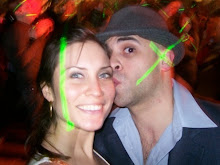In "Imagining what you don't know", McGann returns once again on the recent Cornell edition of Wordsworth, which exemplifies the limits of a present-day critical edition. The better and more thorough a critical edition is--seems to be the bottom line-- the more complicated to use and uninviting it will be. Obviously, his claim is that it would be better suited for a "hypermedia archive with a relational and object-oriented database [organized] as a fully searchable set of hyperrelated archival materials; as a reflexive system capable of self-study at various scales of attention."
McGann also elaborates on the greater potential of critical abstraction implicit in the electronic, computer-based approach:
"Translating paper-based texts into electronic forms entirely alters one's view of the original materials. So in the first two years of the Archive's development I was forced to study a fundamental limit of the scholarly edition in codex form that I had not been aware of. Using books to study books constrains the analysis to the same conceptual level as the materials to be studied. Electronic tools raise the level of critical abstraction in the same way that a mathematical approach to the study of natural phenomena shifts the theoretical view to a higher (or at any rate to a different) level."
The most interesting aspect of this paper was, in my view, the section in which McGann illustrates his discovery, through image-distorting programs, of chromatic patterns and compositional schemes in Rossetti's paintings that even an expert like himself had never previously noticed. His recollection of that experience highlisghts a feature of digital editing I had not yet thought about. He is suggesting that, at least as far as visual arts are concerned, the filtering of material through sophisticated computer-graphics programs can yield precious information about the work that would otherwise be lost. In this sense, digital editing truly takes on a life of its own, and is no longer limited to concentrate, interlink, accelerate, and facilitate access to the same information that on a purely theoretical level could still be presented in book-form (although the book might be 100.000 of pages long, and it would still possess that obsolete, linear, first-page-to-the-last quality). A "philosophical" question arises, however. In the closing remarks, Mc Gann claims that an image-filtering program such as the one he used could serve as "a critical and interpretive tool". If McGann is saying that those patterns could not have possibly been noticed outside of a digital environment, can we assume they were even deliberately intended by the artist himself? Was Rossetti counting on his paintings being analyzed with the help of 21st century computer software? And by distorting an image (a work...), are we not producing--perhaps to liberally-- another image, a new work? My opinion is that, if indeed those elements were consciously incorporated into the work by the artist, even if subtly concealed, then it must be possible for a receptor/critic to detect them using the instruments the artist assumed would be at the receptor/critic's disposal.
However, being the computer science ignoramus that I am, I was completely at a loss reading through the more technical paragraphs, detailing the evolution of the Rossetti archive. All I could take away from those sections are a few elementary questions, which will hopefully be answered during tomorrow discussion (although I think I might survive if for the rest of my life I never hear a word about SGML again):
what's the difference between HTML and SGML?
Is McGann saying that, because of the copyright issues, the reproductions of Rossetti's paintings in the Rossetti Archive are actually reproductions of photographs?
Monday, February 4, 2008
Subscribe to:
Post Comments (Atom)

No comments:
Post a Comment